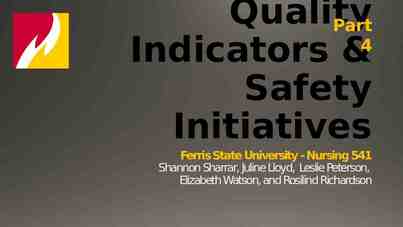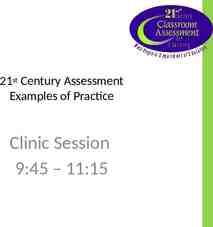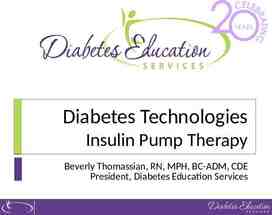PMS scheme guide to new applications November 2022
19 Slides524.06 KB

PMS scheme guide to new applications November 2022

Introduction Purpose of this document This slide pack has been designed to help new applicants with their applications to prequalify for the Performance and Management Services Scheme (PMSS). This document will look at these specific parts of the PMSS application: 1. Choosing a prequalification level 2. Nominating capabilities and engagement types 3. Providing evidence of organisational experience 4. Basic checks for Referee Reports (Full prequalification ONLY) 5. Complementary schemes for IT or Infrastructure-related suppliers

1. Choosing a prequalification level

PMSS prequalification levels What are they and why do they matter? Base o Two types of prequalification – Base and Full. o Prequalification level determine what types of work and the maximum engagement value of any work you may perform under the scheme. o You do not need to have the minimum insurances when applying but you will need them if engaged by a NSW Government agency through the scheme. o See table opposite for a brief overview of the levels. Full Maximum engagement value (ex GST) 50,000 No limit Engagement risk level Low-risk only Low and high risk Minimum insurance requirements for each PMSS engagement Additional application requirements Level of assessment Workers Compensation Workers Compensation Where applicable: Public liability – 5 million Professional indemnity - 2 million (and no more than 10 million) Where applicable: Public liability – 10 million Professional indemnity - 10 million or per an approved scheme under the Professional Standards Act Not applicable x 3 Referee Reports as evidence of nominated capabilities Eligibility assessment Detailed evaluation

Selecting a prequalification level Questions to guide you in choosing the most appropriate prequalification level Consider the following questions for your business in terms of a ‘yes’ or ‘no’ response: 1. Is it a new with limited work experience? 2. Would it be difficult to provide at least three different written references for work that you or other key personnel have performed? If you mostly answered ‘yes’ – consider applying for Base level. 3. Is the average engagement value for recent works less than 50,000 (ex GST)? If you mostly answered ‘no’ – consider applying for Full prequalification. 4. Would it be difficult to maintain the minimum insurance requirements for each engagement (see previous slide)?

2. Nominating capabilities and engagement types

Capabilities and engagement types What are they and why do they matter? o Capabilities identified in the diagram opposite are subject to the mandated Standard Commercial Framework for engagement types 1-12. Engagement type 15 ‘Infrastructure services’ is subject to the recommended Infrastructure Advisory Standard Commercial Framework (IA SCF) Engagement type 14 ‘Specialised Services’ is not subject to any commercial framework. If you are offering services within this capability, you must submit a daily rate card in the prescribed template. Standard Commercial Framework applies o You must only nominate capabilities that your business provides and for which you can provide some form of supporting evidence for assessment in the application. Daily IA rates SCF applies required o The terms ‘capabilities’ and ‘engagement types’ are used interchangeably in the application process. They refer to broad categories of work that your business ‘signs up’ to provide NSW Government agencies through the scheme. Capabilities Government & Business Strategy Financial Services Audit, Quality Assurance and Risk Marketing and Customer Operations Business Processes Project Management Change Management Human Resources Procurement & Supply Chain Transaction, Actuarial, Taxation Taxation Actuarial Transaction services Specialised Services Infrastructure Services

Selecting capabilities Specifying capabilities you can offer through the scheme o You must identify specific engagement types (see examples in green opposite) in your application for assessment. The full list of engagement types is available here. o TIP: You should first consider engagement types under 15. Infrastructure if your business: a) is in an infrastructure-related field like urban/transport planning, architecture, commercial property, or b) frequently performs work, e.g. risk/ project management, in an infrastructure context. c) Is not an ICT related service provider 5. Financial Services 5d – Asset Management Operations 8. Human Resources 8b - Culture 15. Infrastructure 15a - Strategy & Planning

Impact of capability choice Daily rates for any nominated capabilities in 14. Specialised Services o You must completed and submit a Rate Card if you are nominating capabilities falling under Specialised Services. o Provide a daily rate as indicated in the template. Use the drop down list in the template (see opposite) to specify the engagement type. o Do not include engagement types you have not nominated and supported in your application.

Impact of capability choice What nominating capabilities means for your application o If applying for Full prequalification – your Referee Reports must correspond to a nominated example engagement and refer to the same nominated capabilities in that example. All applications o For example, if you nominate specific engagement type 1a, then one of your example engagements must refer to 1a. Nominated capabilities Full prequalification only o Nominated capabilities must flow through to your Organisational Experience document (see diagram opposite) to demonstrate work you have performed in these areas. Organisational Experience Example Engagement Example Engagement Example Engagement Referee Report Referee Report Referee Report

3. Providing evidence of organisational experience

Tips for all applicants o You must complete the prescribed template (screenshot below) and pay particular attention to the red text. o All Full prequalification applicants must identify at least three engagements, by stating ‘yes’ where the purple box is, to support with a corresponding Referee Report.

4. Basic checks for Referee Reports (Full prequalification ONLY)

What should be in a Referee Report Basic inclusions – Section 1 o Capabilities you have nominated in your application must correspond to a Referee Report – in other words, please ensure that each of your capabilities is supported by at least one Referee Report. A single Referee Report does not need to cover all nominated capabilities

What should be in a Referee Report Basic inclusions – Section 2.2 o Pre-fill capabilities you listed in Section 1 for the Referee’s comments where the purple box is. Using the the example in the previous slide, you would insert 1a and 3a. o You may choose to allocate one capability per row or combine complementary capabilities for the Referee’s comments.

What should be in a Referee Report Basic inclusions – Section 2.4 o Check that your Referee Report has been correctly signed and dated. Signatures or e-signatures only – reports signed with printed names will be rejected All reports must be dated

5. Complementary schemes for IT and infrastructure-related suppliers

Complementary NSW Government buying arrangements Click on the schemes for further information Do you work in an IT or infrastructure space? IT Infrastructure Consultants in Construction Scheme ICT Services Scheme Mandated for all NSW Government agencies 17 categories you may register under IT-specific contract templates Managed by Digital.NSW Recommended for all NSW Government agencies Five categories: project management, planning, engineering, architectural and assessment Managed by the Public Works Advisory

Disclaimer Copyright NSW Treasury This publication is copyright. Other than for the purposes of and subject to the conditions prescribed under the Copyright Act, no part of it may, in any form or by any means, be reproduced, altered, manipulated, stored in a retrieval system or transmitted without prior written consent of the copyright owner. Any inquiries relating to consents and use of this publication, including by NSW Government agencies must be addressed to Communications, Department of Treasury.






